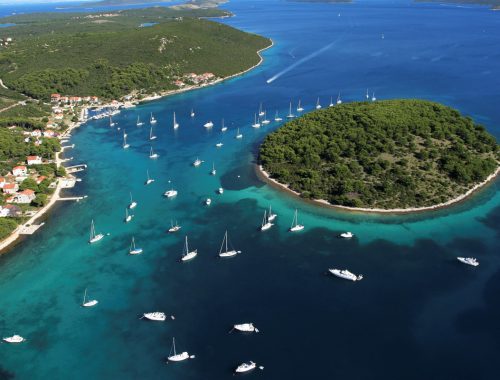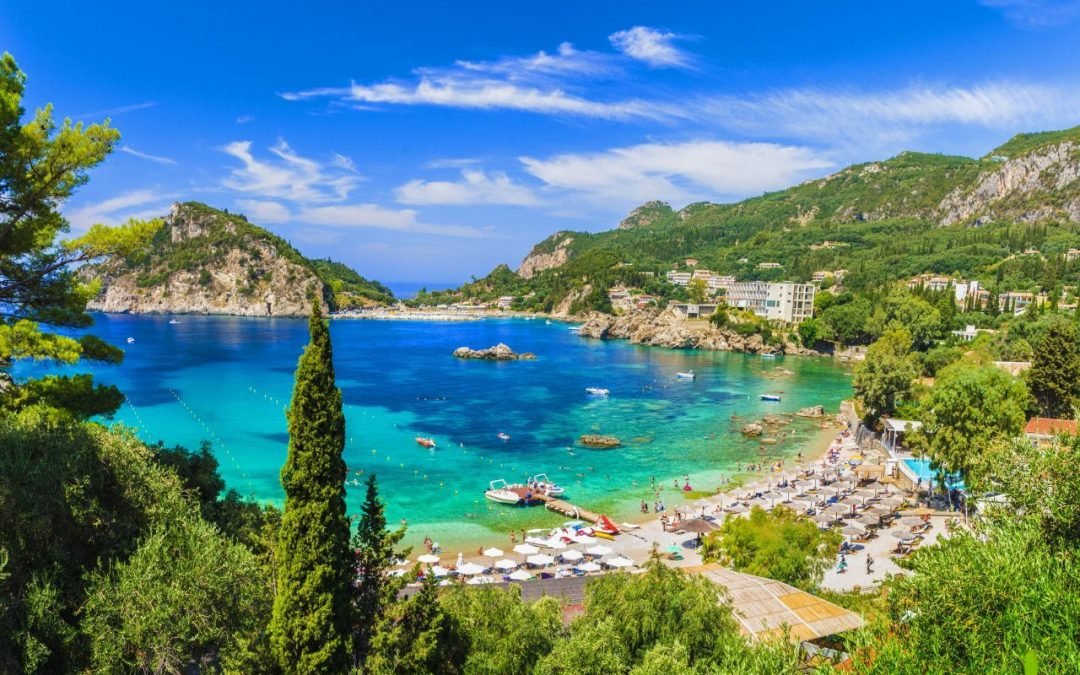
Sailing along the northern coast of Corfu, an island that celebrates life
Set sail on a 7-day adventure to discover Corfu, a magical Ionian island offering long sandy beaches, charming bays, seaside villages perched on cliffs, and a perfect blend of modernity and traditional charm.
Corfu, or “Kerkyra” as it was known in ancient times, invites you to uncover its treasures slowly, much like the Phaeacians did thousands of years ago when they landed here, discovering its vibrant colors, fragrant scents, soothing sounds, and enchanting atmosphere. Part of the Ionian archipelago, Corfu is surrounded by other captivating islands like Paxos, Lefkada, Kefalonia, Ithaca, Zakynthos, and Kythira. The waters between Corfu, Epirus, and Albania are known as the Kerkyraiki Sea, with the northern part referred to as the Aghios Stefanos Strait, just a mile wide at its narrowest point.
Once ashore, you’ll be welcomed by Corfu’s stunning landscapes: long stretches of soft sandy beaches, picturesque coves, quaint villages clinging to steep slopes, and lush forests nourished by winter rains and a mild, pleasant climate year-round. The northern coast is rugged and dotted with bays, inlets, and headlands, while the southern shores transition to long, sandy beaches and smoother coastlines. Corfu is also surrounded by numerous small islands and islets, adding to its allure.
In recent years, Corfu has embraced development to provide modern facilities and nautical services for sailors, yet it retains its timeless charm. From seaside tavernas to inland villages, the island combines its traditional roots with the warmth and hospitality of its people, ensuring you’ll feel at home from the very first day of your cruise.
Explore Corfu and let its beauty and spirit make your journey unforgettable.
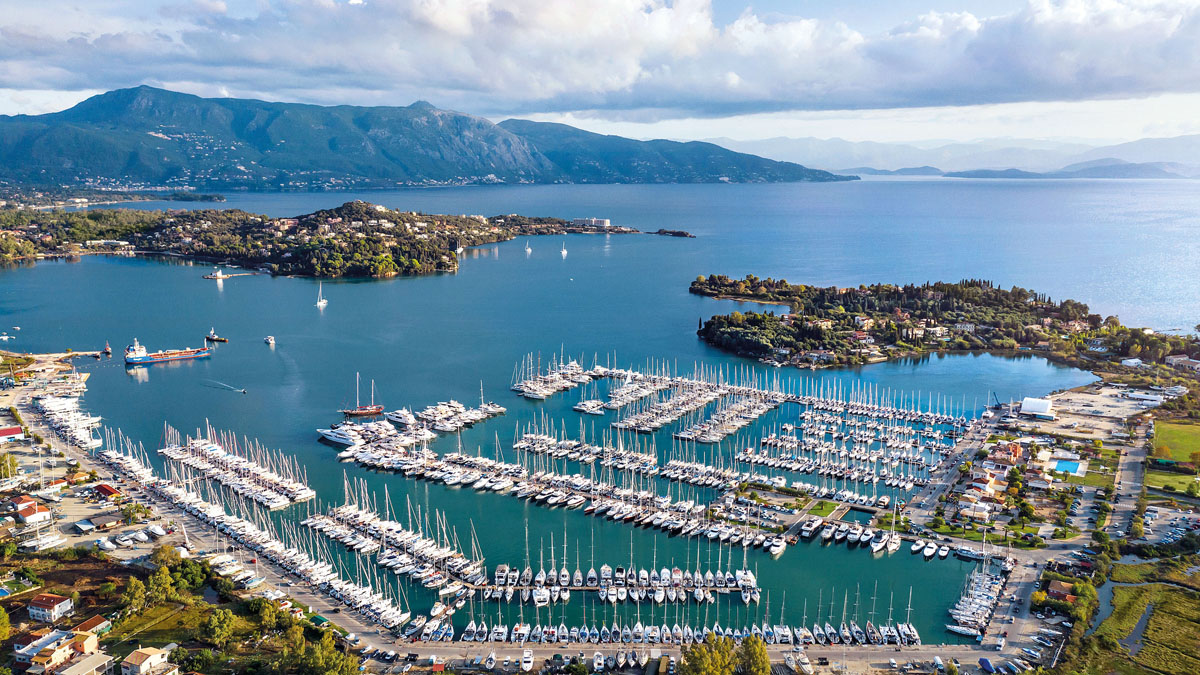
Day 1, Gouvia Marina, boarding
Our adventure begins at Marina di Gouvia, a modern and well-equipped harbor nestled in a beautiful, sheltered bay that can accommodate up to 960 boats. Arriving by sea, you’ll pass by the small Lazaretto Island and navigate between the two headlands of Komeno and Tourka, guided by buoys marking the entrance. Inside the marina, you’ll find a range of amenities including a restaurant, supermarket, ATM, laundry facilities, telephone services, a fuel station, and provisions for water and electricity. Security is assured with guards at both entrances 24/7.
Once your boat is settled, you can take a taxi or rent a scooter to explore the nearby village of Gouvia. This charming spot boasts two lovely beaches, one of which hides the ruins of Venetian shipyards dating back to the 17th century. The main beach is a mix of sand and pebbles—small but picturesque—and offers sunbed and umbrella rentals as well as various water sports. It’s been awarded the Blue Flag for its crystal-clear waters.
From here, you can also admire the enchanting Ypapanti Church, built in 1713 on a tiny islet connected to the mainland by a narrow strip of land—a magical sight at sunset. The historic center of Gouvia offers a great selection of bars and restaurants, serving everything from local dishes to Chinese, Thai, Italian, and Mexican cuisine.
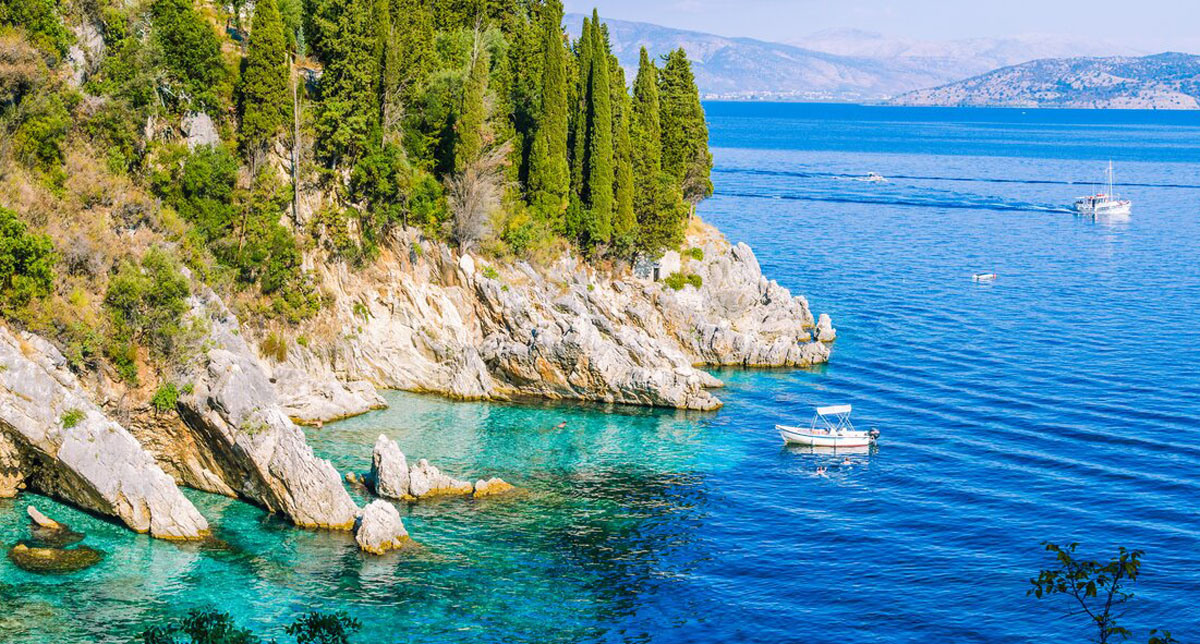
Day 2, Gouvia Marina – Kalami/Koloura, 7 miles
Start your day early with a visit to Kalami, a breathtaking bay on the northeast coast of Corfu. Known as the “black pearl,” it gets its nickname from a unique shadow that appears on the seabed, visible through the turquoise waters when the sun hits just right. This phenomenon is caused by underground springs flowing down from the mountains. The shoreline is lined with smooth white pebbles, and the shallow waters make it a perfect spot to relax. Kalami’s intimate and romantic charm has even captured the attention of filmmakers and TV producers, including the creators of the British series The Durrells. The show follows the adventures of the famous English family who lived in Kalami at the White House, now a delightful seaside taverna and guesthouse. Despite its popularity, the village has preserved its quiet, traditional fishing-village atmosphere, thanks to its carefully managed tourism.
For those seeking even more seclusion, head to the tranquil Kouloura Bay. Shaped like a horseshoe, it’s surrounded by pine trees and a few private homes. Here, you’ll find just one taverna and a small chapel right by the sea. The crystal-clear, deep turquoise waters are perfect for swimming, snorkeling, and diving. The entire bay offers scenic walking paths along the shoreline, with stunning panoramic views. Kouloura itself is a tiny yet picturesque fishing harbor, full of rustic charm.
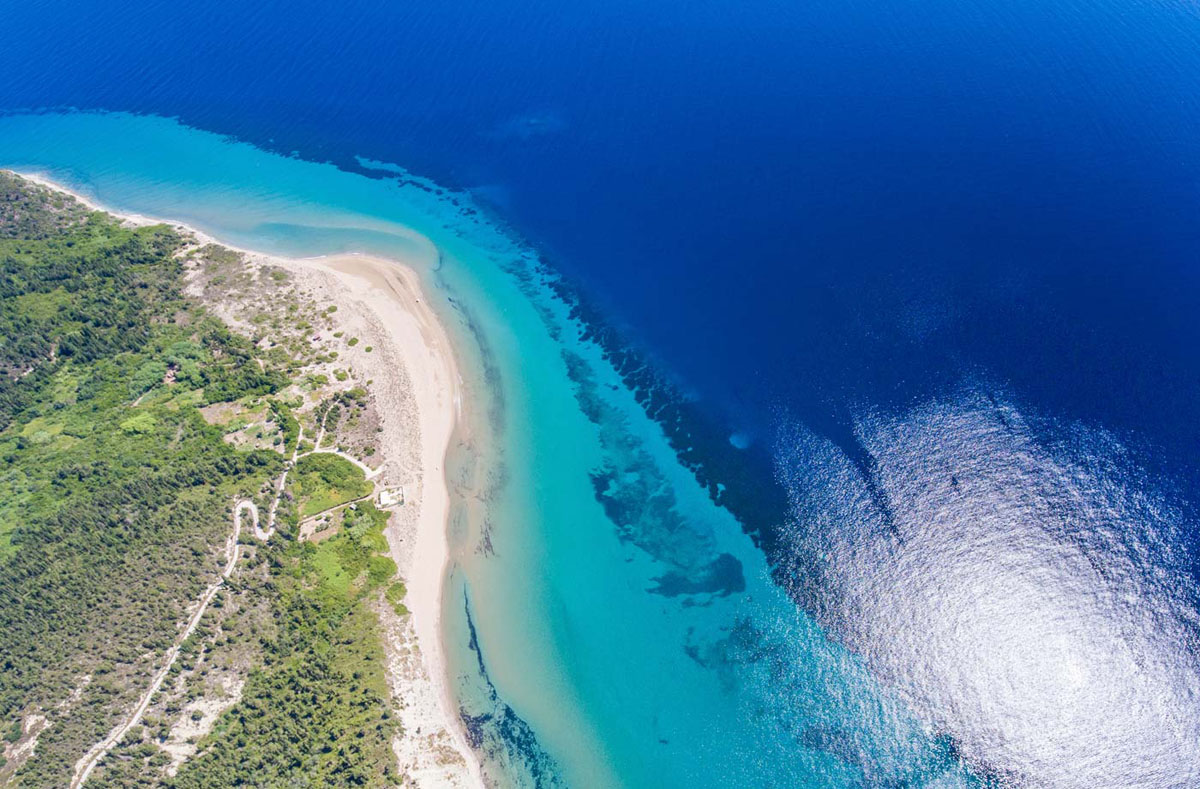
Day 3, Kalami/Koloura -Erikousa, 22 miles
Erikousa is the northernmost island of the Diapontian archipelago, located off the northwestern coast of Corfu. Known for its pristine nature, stunning beaches, and charming little restaurants, it’s the perfect destination for anyone seeking a peaceful and relaxing escape far from the crowds.
The main port is nestled between two small hills within one of the island’s two large bays. Around the port, you’ll find Erikousa’s main settlement, complete with small shops, cafes, taverns, and even a pharmacy. Not far from the port lies Stamoleka Beach, a beautiful sandy stretch with shallow waters, ideal for swimming. Another favorite is Pranghini Beach on the opposite side of the island. For those arriving by boat, there’s also an alternative docking spot at the old port, Fiki, located on the western side.
Exploring Erikousa is a delightful experience. The island is mostly flat, round in shape, and spans just 2 kilometers in diameter. You can easily get around on foot or by bike, following scenic trails lined with olive and cypress trees. The lush vegetation is captivating, with a mix of cypresses, olive trees, myrtle, and heather – the plant that gave the island its name. Along the way, you might come across traditional windmills, and in the village of Agia Triada, you’ll find a beautiful church with a stone-carved bell tower.
Erikousa offers a tranquil escape into nature, perfect for those who appreciate simple beauty and unspoiled landscapes.
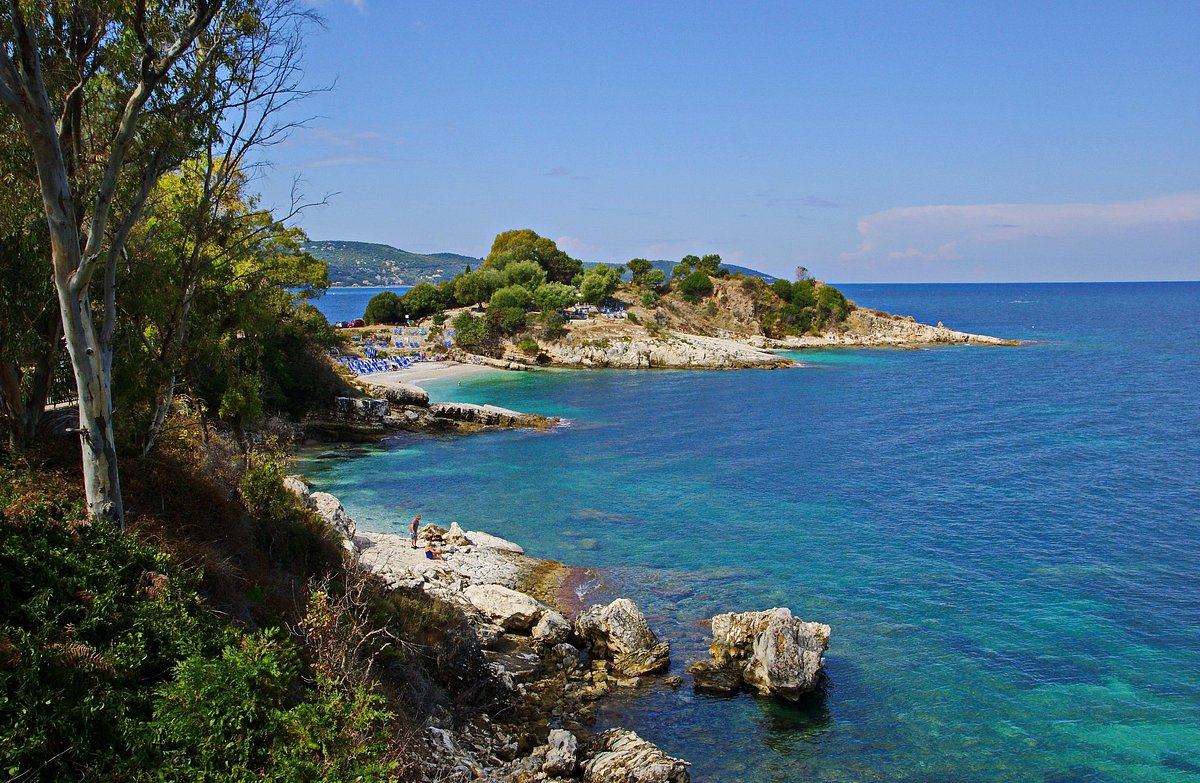
Day 4, Erikousa – Kassiopi, 19 miles
We set off toward Kassiopi, one of the most popular villages in the northern part of Corfu. Originally a fishing village in ancient times, Kassiopi has transformed into a charming tourist destination, complete with two inviting beaches. Back in the Roman era, it was a bustling port, strategically positioned on Greece’s main maritime route. Today, it retains an undeniable allure.
Approaching Kassiopi by sea, the towering Mount Pantokrator stands out, surrounded by lush greenery, creating a breathtaking view. For an overnight stay, the best option is the quaint, picturesque old port. Still used by local fishermen, it exudes a simple, authentic Greek atmosphere.
The village’s historic center is an architectural gem, featuring a lovely central square and the ruins of a Byzantine castle built on Roman foundations. Visitors will find small grocery stores, bakeries, pastry shops, souvenir and local product shops, jewelry boutiques, clothing stores, and artisan workshops selling ceramics and leather goods.
The surrounding area, overlooking the Albanian coast, is incredibly green and scenic. From the castle’s ramparts, you can enjoy stunning views. Close to the village are three beaches. On the left side lies a wide rocky bay, perfect for relaxation or water sports. Behind a nearby headland, two smaller, equally beautiful beaches with crystal-clear water await, easily accessible via a short walk.
For evening fun, head to the port’s main square, where you’ll find a selection of restaurants and bars, many specializing in fresh seafood dishes. Kassiopi truly offers something for everyone—a perfect blend of natural beauty, history, and Greek charm.
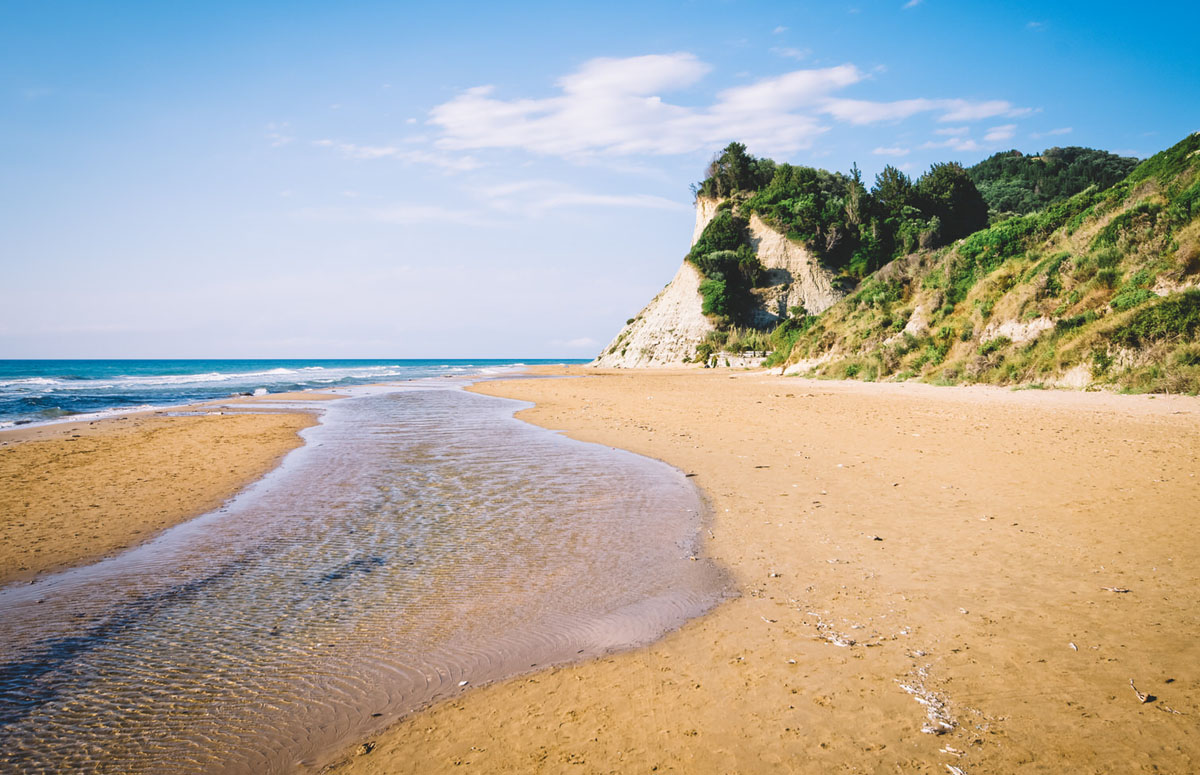
Day 5, Kassiopi – Agios Stephanos, 12 miles
Let’s set sail again, heading toward the northwest coast of Corfu to explore the famous Agios Stefanos beach. This wide stretch of light sand meets the sparkling waters of a bay framed by rocky cliffs on one side and a charming village nestled among hills with distinctive red rooftops on the other. The bay is well-sheltered from the wind and features a river flowing through its center.
At the southernmost tip of the bay, you’ll find the Agios Stefanos chapel, which dates back to the 18th century. To reach it, you can take the path by the pool of Hotel Nafsica or opt for a less steep route starting near the Summer Dream Restaurant. Along the way, you’ll be treated to breathtaking views of the beach and surrounding hills. This walk is best enjoyed later in the day when the Mediterranean shrubs, like thyme and jasmine, fill the air with their rich fragrance.
For a meal with a view, the village of Arillas is a must-visit. Its many seaside tavernas offer a perfect spot for lunch or dinner. Take the small road leading to the chapel for a stunning panorama of both Agios Stefanos and Arillas beaches. Since the path can be a bit uneven, be sure to wear comfortable shoes.
On windy days, Agios Stefanos beach might surprise you with dramatic waves, so it’s a good idea to check the weather forecast beforehand. Additionally, seaweed can sometimes wash ashore due to the currents, but don’t worry—the beach is regularly cleaned to keep it in great condition.
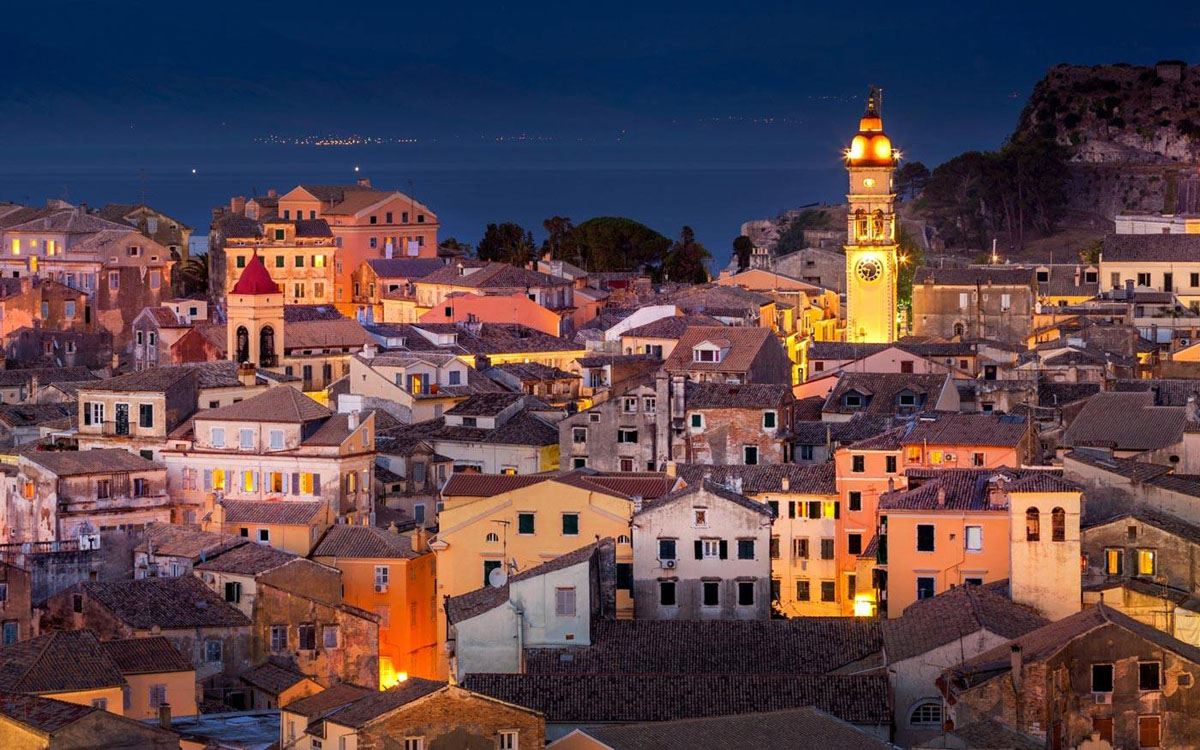
Day 6, Agios Stephanos – City of Corfù, 25 miles
Time to explore what will undoubtedly be a highlight of your cruise to the island of Corfu: the island’s capital, Corfu Town. The old part of the city is one of the most enchanting gems of modern Greece. Located on the island’s eastern coast, it boasts a large, well-equipped port for visitors arriving by sea. From the docks, you can admire the two fortresses facing each other, their walls embracing a picturesque collection of stone buildings with wooden roofs arranged like an amphitheater overlooking the sea.
The Old Fortress, perched on a rocky promontory jutting into the water, was built by the Venetians to protect the harbor. In summer, it hosts a variety of cultural events and festivals. The New Fortress, also from the Venetian era, houses a fascinating ceramic museum.
Strolling through the historic center, you’ll be captivated by the charm of its cobblestone medieval streets, Venetian wells, narrow alleys, and hidden courtyards. Many shops have dual entrances and exits, one opening onto a street and the other onto a parallel one, adding to the allure of getting lost among artisanal workshops, local cellars, and charming Orthodox churches. You can sample traditional products, browse handmade crafts, or simply let the sweet aromas of the area envelop your senses.
Don’t miss the Campiello neighborhood, one of the most beautiful quarters in the historic center. Here, at 18 Filellinon Street, you’ll find the oldest building on the island, dating back to 1497. Also worth exploring is the Spianada, a lush green space separating the city from the Old Fortress. Dotted with statues of Corfu’s notable figures, it’s the setting for many religious and social events.
Lastly, there’s the Liston building, inspired by Paris’s Rue de Rivoli. Beneath its elegant arcades, you’ll find an array of cafés and restaurants that serve as the heart of Corfu’s vibrant social scene.
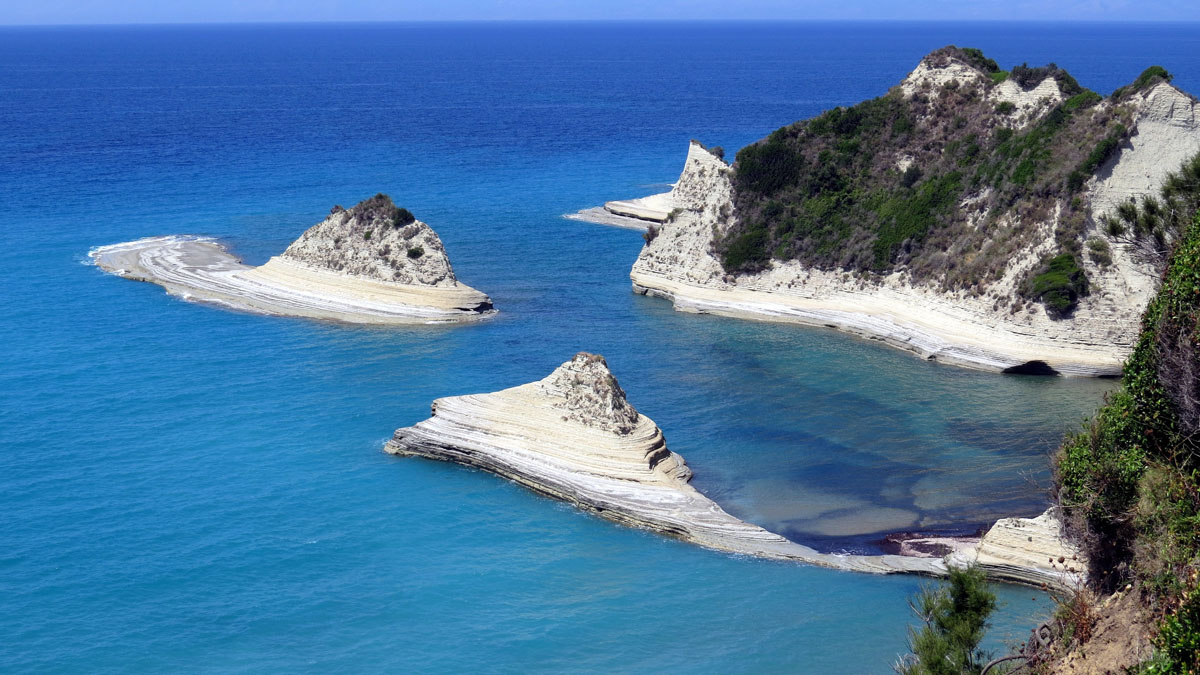
Day 7, Gouvia Marina, 4 miles
Our sailing cruise along the northern coast of Corfu has come to an end, and we’re heading back to the home base at Gouvia Marina. Just a few miles are all it takes to reach the harbor. But it’s the memories of the breathtaking views, the unforgettable experiences, and the many fascinating, history-filled places that stretch time and leave us dreaming of returning to these magical spots as soon as possible.
You May Also Like
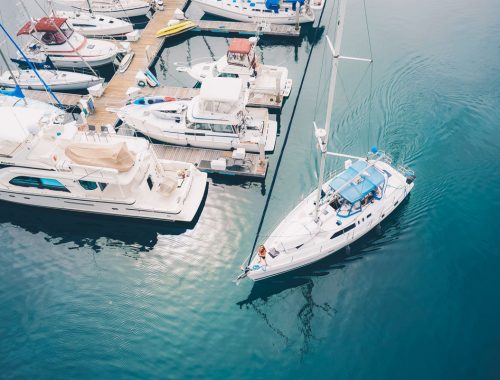
Docking in a harbor: When is it worthwhile and how to do it best
23/10/2025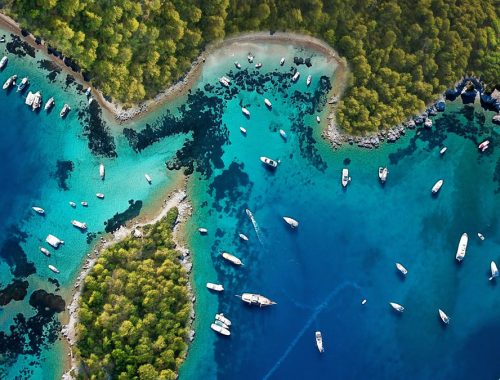
Turkey: Sailing in the Gulf of Gökova is a delight
10/11/2025